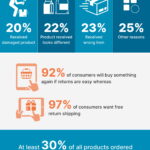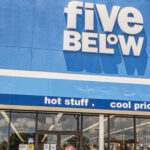Companies with boost product and merchandising innovations spend millions on sales activations, promotions, displays and instore merchandising, but are very risk averse on upgrading to a retail management tool to evaluate all this and ensure its productivity. Why is this?
Having talked to several Sales and Brand Managers following is the list that I came up with:
Ownership: Who’s initiative is it, as this falls under sales, merchandising or brand management. No single ownership leads to this piece being ignored. Multi stakeholders projects are rarely productive unless the directive to change comes from the top.
Way forward: This should be parked under Corporate Innovation, a small, closely knit project team consisting of stakeholders from Sales, Brand, Supply Chain and Logistics. If a robust retail management system is installed, everyone will benefit.
Budgets: Normally adoption of technology is costly and budget allocation is difficult as it requires in depth of recee, quotations and trials. Budget allocations can be one time and recurring and its ROI is not immediate. So this initiative is pushed back.
Way forward: Treat this as organizations treat ERP implementations. Very high implementation, but payback is in efficiencies it brings in. For good comprehensive retail management tools, prevention in loss of sales will help calculate the payback. All modern tools have this inbuilt feature.
Data Freight: Data analytics is not every manager’s strength. Having data reports is great, but what actions are taken based on data reporting is key, as if data does not translate into actionable steps, it’s just a fancy report on your desktop. Organizations should help build these data consumption habits, so managers shift from ‘gut’ to data driven actions.
Way forward: Choose a Retail solution that has a predictive tool or actionable auto triggers. This may take a more pre-launch setup time, but once this is done, then auto triggers or action points will be emailed to all relevant stakeholders who are part of the retail ecosystem in the organization. Intelligent Retail Systems help drive this.
Field Force Legacy: Unfortunately field force has not kept pace with technology innovations, earlier the entire team used to get company sponsored mobiles, then due to rapid upgrades of Android and iOS equipment, the companies were much happier on BYOD (Bring your own device). Cloud computing and storage was not readily adopted by management.
Way forward: Most retail and merchandising solutions are technology agnostic, that is they work on both Android and iOS systems seamlessly and data is stored securely on cloud servers. Most of these solutions are also DRM (Digital rights management). This is a systematic approach to copyright protection for digital content. The purpose of DRM is to prevent unauthorized redistribution of digital content and restrict the ways users can copy or re-distribute the information. When evaluating a Retail Management solution make sure they have this feature.
Data Security: Most organizations fear data security as one of the key reasons they do not want to migrate to cloud, stop living in the 2000s, this is 2020, data security has really matured and cloud services like AWS, IBM etc provide a very robust security. The storage can also be optimized, and adapted as per the requirements of the organization.
Way forward: Run a security protocol check, ensure you tick all the boxes before commencement. Start with a trial and evolve.
USA and Canadian companies are in the forefront of innovations, but this is one segment they are lagging behind. Time to catch up and leapfrog to state of the art business intelligence driven retail solutions.










